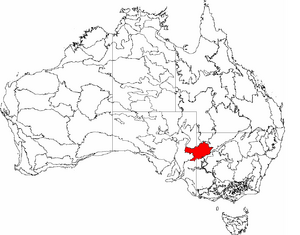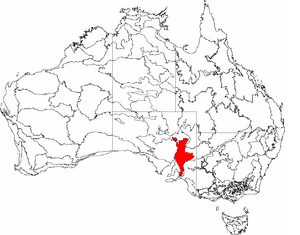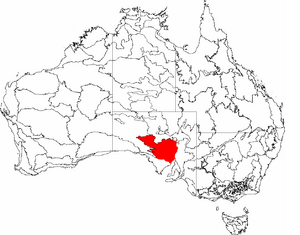Tirari–Sturt stony desert facts for kids
Quick facts for kids Tirari-Sturt stony desert |
|
|---|---|
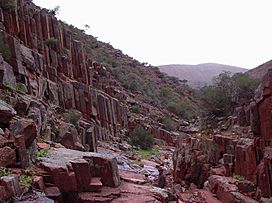
|
|
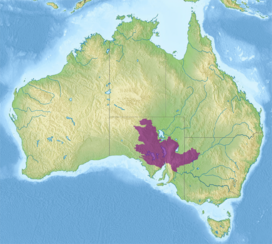
Ecoregion territory (in purple)
|
|
| Ecology | |
| Realm | Australasian |
| Biome | deserts and xeric shrublands |
| Borders | |
| Geography | |
| Area | 376,850 km2 (145,500 sq mi) |
| Country | Australia |
| States | New South Wales, Northern Territory, and South Australia |
| Conservation | |
| Conservation status | Vulnerable |
The Tirari–Sturt stony desert is a huge, dry area in central Australia. It's a type of ecoregion known as a desert and dry shrubland. This special region is home to unique plants and animals.
Contents
Exploring the Tirari–Sturt Stony Desert
This ecoregion includes vast stony plains and areas of red sand. It covers the large Sturt Stony Desert and the Tirari Desert to its southwest. The Flinders Ranges and Gawler Ranges are also found to the south.
The Tirari Desert has more sand dunes than the Sturt Stony Desert. It is also famous for important fossil discoveries. The climate here is extremely hot. Summer temperatures can reach an amazing 50 degrees Celsius!
Towns and Unique Homes
One interesting town in this ecoregion is Coober Pedy. It's a center for opal mining. Coober Pedy is well-known because many people live underground. This helps them stay cool in the extreme heat.
Understanding the Region's Divisions
This large area is divided into smaller parts called bioregions. These are part of a system called the Interim Biogeographic Regionalisation for Australia (IBRA). The Tirari–Sturt stony desert includes the Stony Plains, Gawler, Flinders Lofty Block, and Broken Hill Complex bioregions.
Plants and Animals of the Desert
Even though it's a harsh environment, many living things call this desert home. Besides the stony plains and sands, you can find areas with different types of plants.
Desert Plant Life
Some parts have chenopod plants, which are tough and can survive in dry conditions. There are also areas of mallee and mulga wooded scrubland. These plants have adapted to the hot, dry climate.
Amazing Desert Animals
The region is home to a variety of wildlife. These animals have special ways to cope with the heat and lack of water. You might see powerful wedge-tailed eagles soaring above. The yellow-footed rock wallaby and western grey kangaroos live in the Flinders Ranges. They are well-suited to this rugged landscape.
Protecting the Desert Environment
The very center of the desert is too harsh for people to live in. This means that the environment there remains mostly untouched and undamaged. However, the areas around the edges, which are a bit greener, are sometimes used for grazing sheep.


